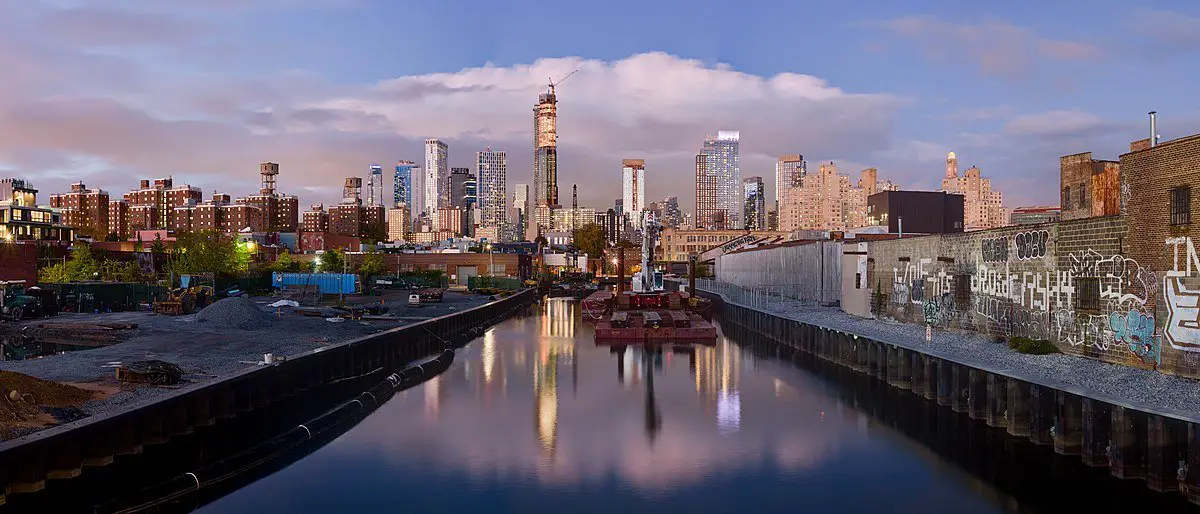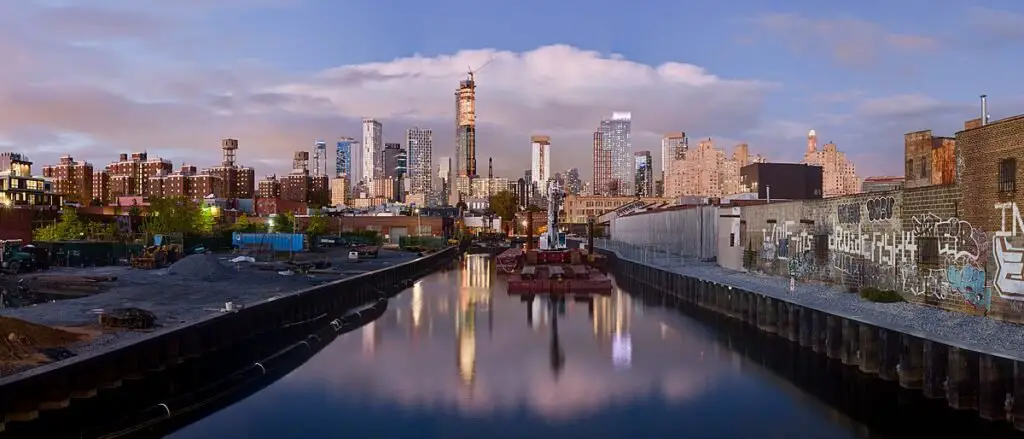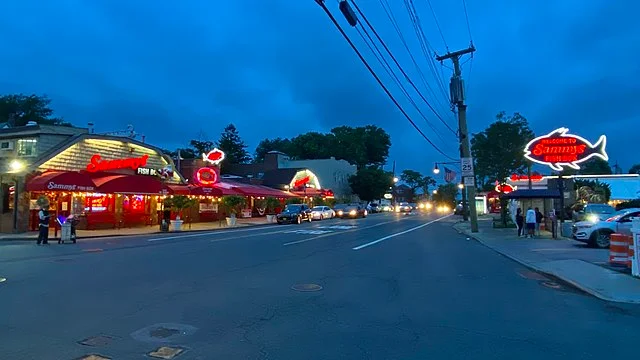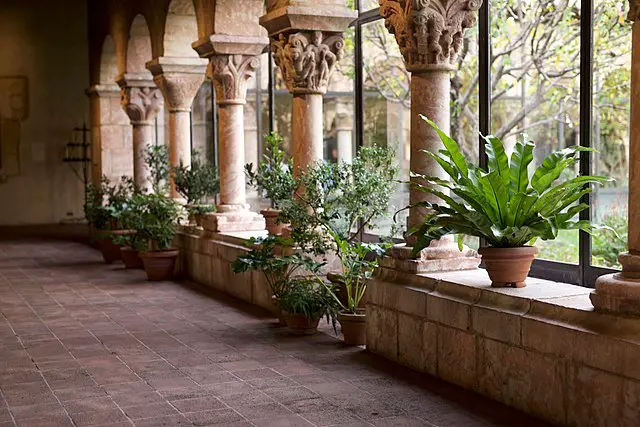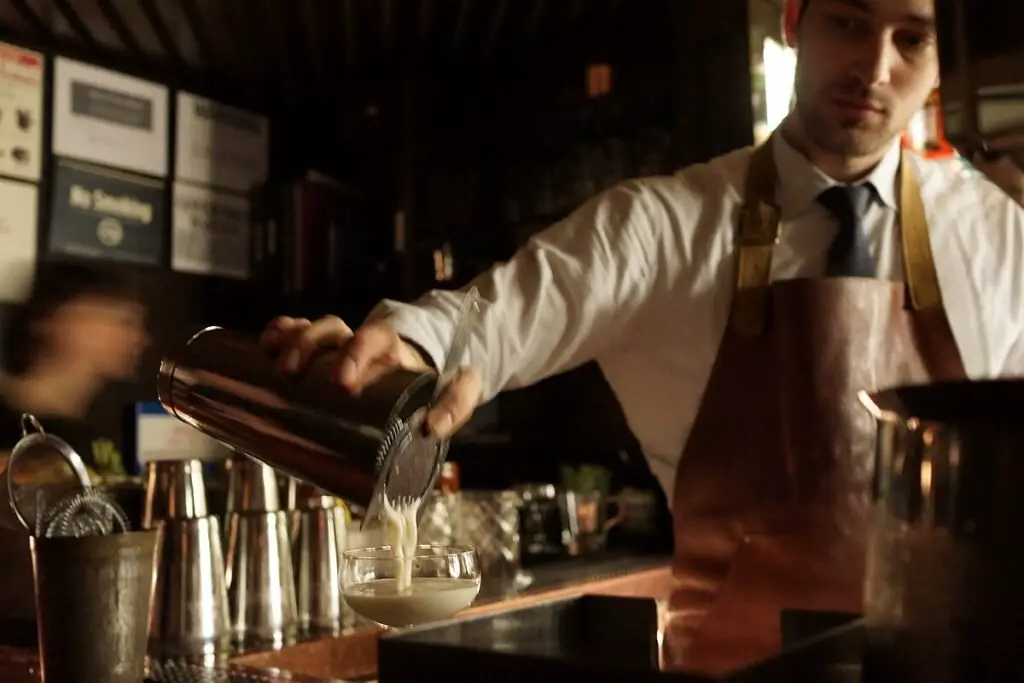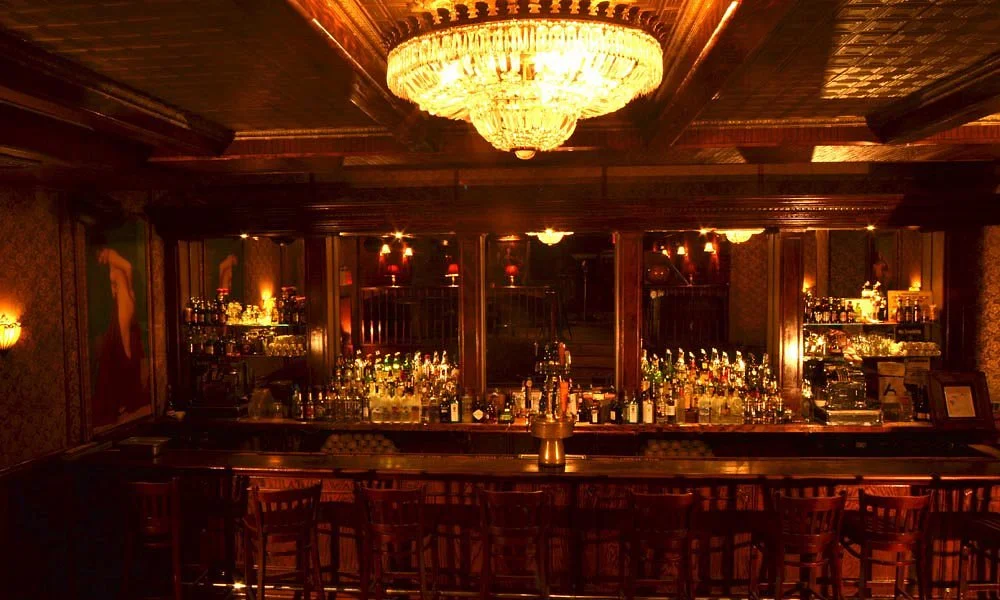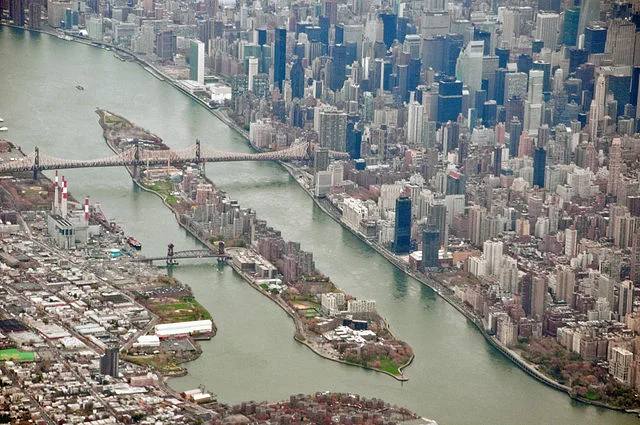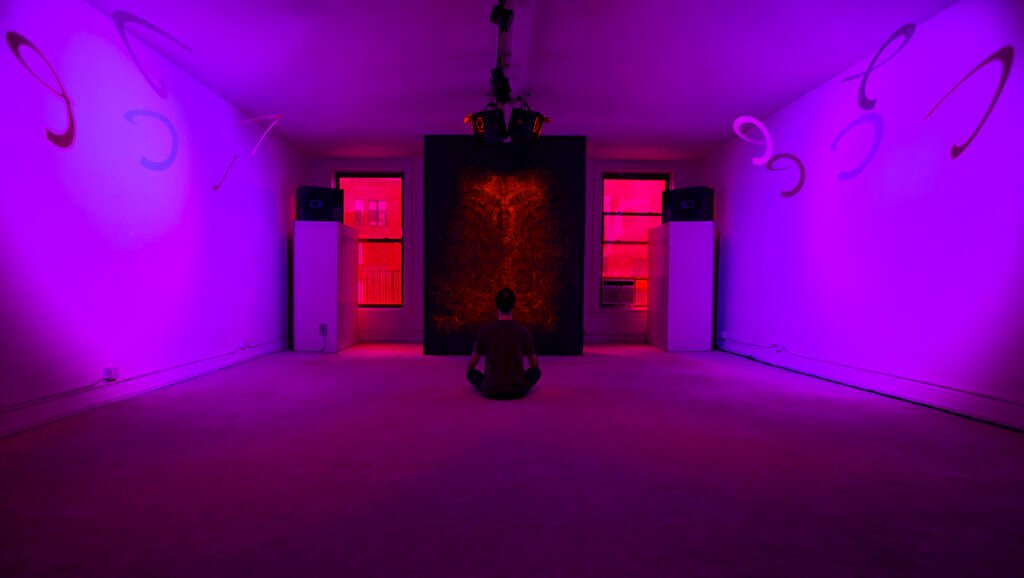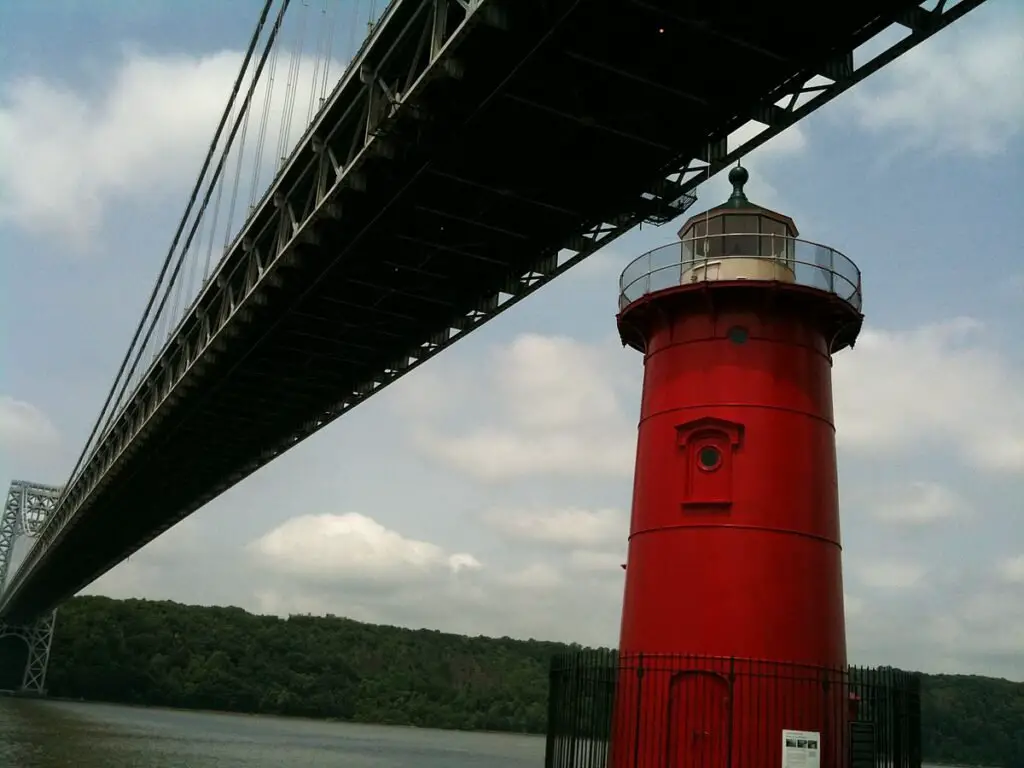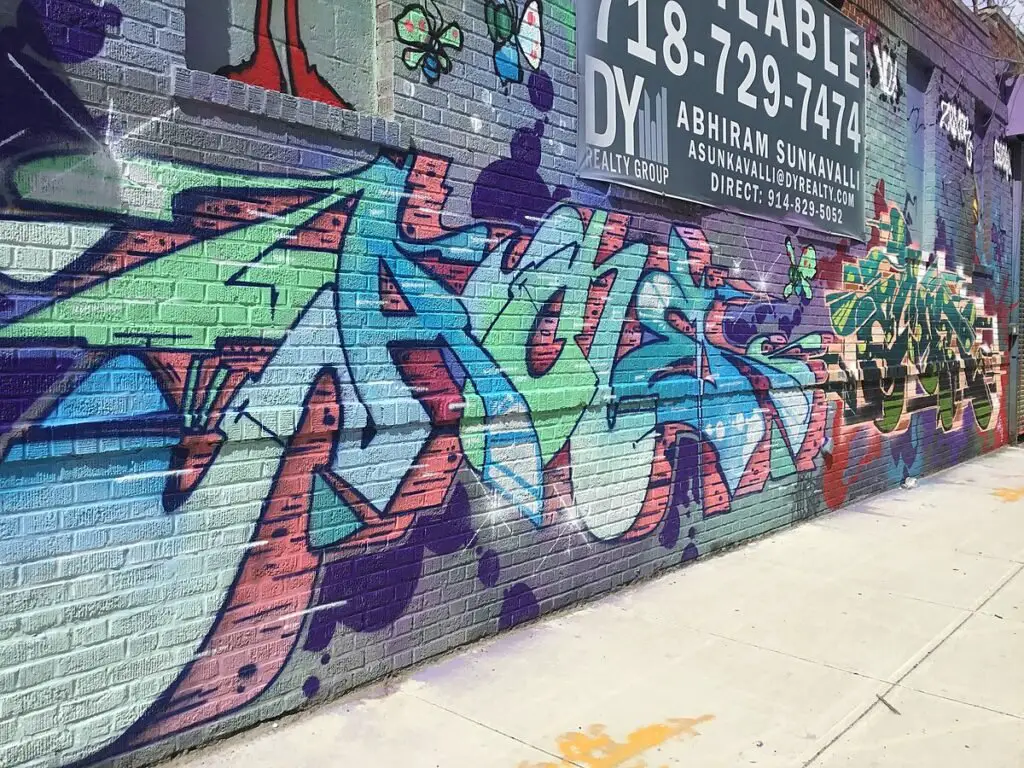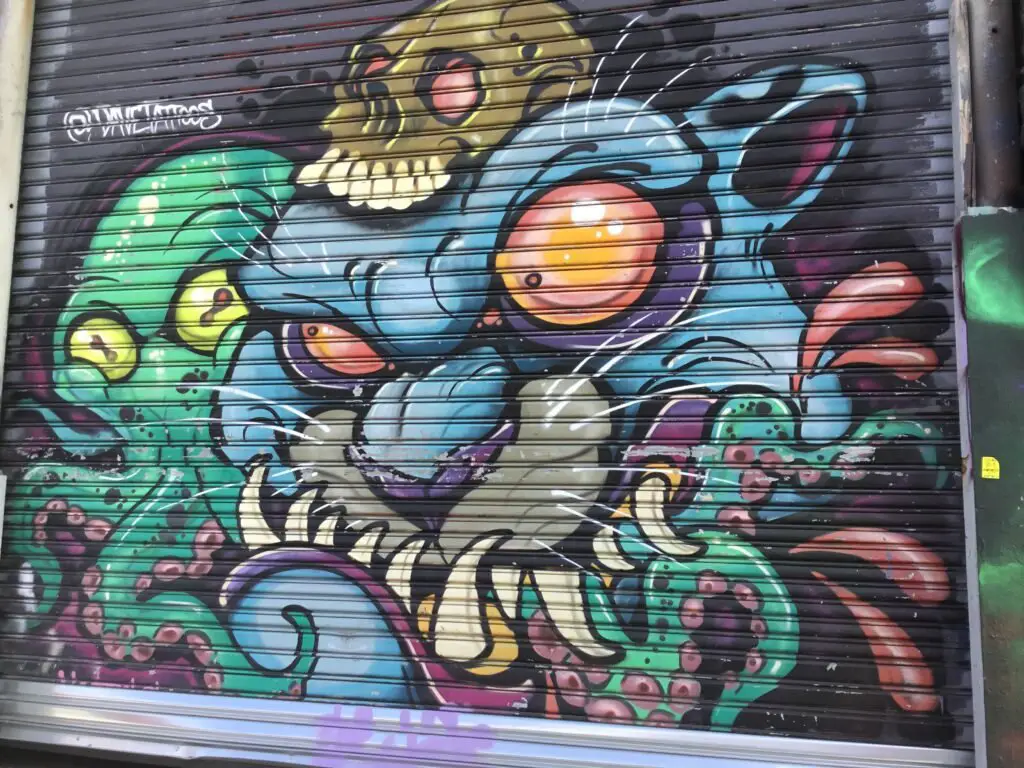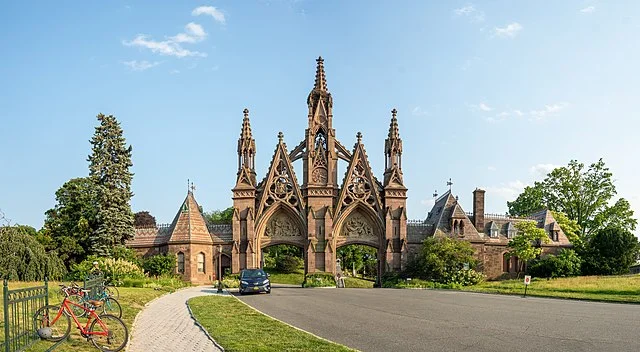New York City is known for its iconic landmarks like the Statue of Liberty, Central Park, and Times Square, but beyond the tourist hotspots lies a treasure trove of hidden gems. For those seeking to explore the city like a local, these lesser-known spots offer unique experiences, charming escapes, and secret adventures waiting to be uncovered. Whether you’re a first-time visitor or a seasoned New Yorker, step off the beaten path and discover the magic of New York City’s hidden treasures.
The Elevated Acre
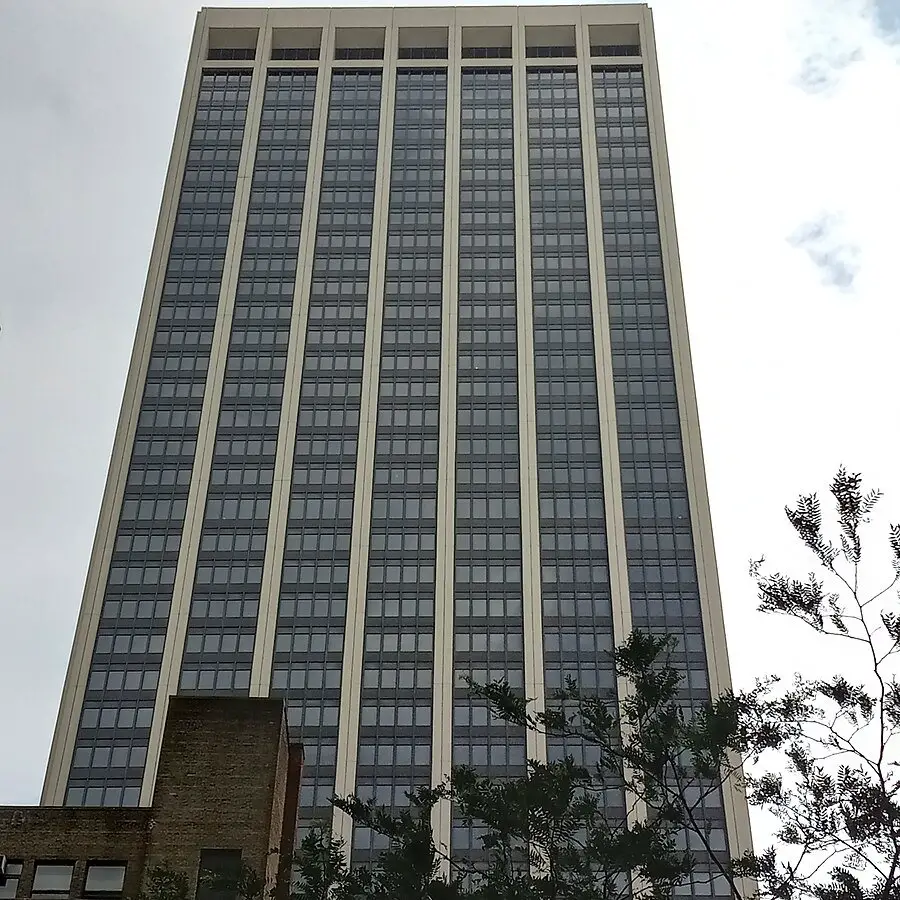
Nestled within the architectural maze of New York City’s Financial District, The Elevated Acre offers a serene escape from the relentless pace of Wall Street. This hidden gem, positioned atop a concealed escalator at 55 Water Street, provides a surprising enclave of tranquility right in the heart of the urban jungle.
Once you ascend via the discreet escalator, you’re greeted by a meticulously maintained green space that opens up to breathtaking views of the East River and the iconic Brooklyn Bridge. The Elevated Acre, with its polished lawns and neatly arranged seating areas, offers a panoramic vista that contrasts starkly with the concrete and steel below. This juxtaposition elevates your experience from the chaos of the city to an oasis of calm.
The Elevated Acre’s thoughtfully designed layout includes landscaped gardens, an amphitheater, and even a small vineyard. Its environment is designed to foster an atmosphere of peaceful seclusion, making it an ideal location for a quiet lunch break or a meditative stroll. Office workers frequently use this space for a moment of respite, enjoying their lunch while soaking in the serene surroundings.
The ambiance here is accentuated by the gentle rustling of leaves and the mesmerizing flow of the East River, providing a stark contrast to the hustle down on Wall Street. Whether you’re a local looking for a respite or a visitor wanting to experience a different side of New York City, The Elevated Acre promises a unique and refreshing experience. Its hidden nature adds to its charm, making the discovery of this elevated park a memorable highlight in your urban adventure.
City Island
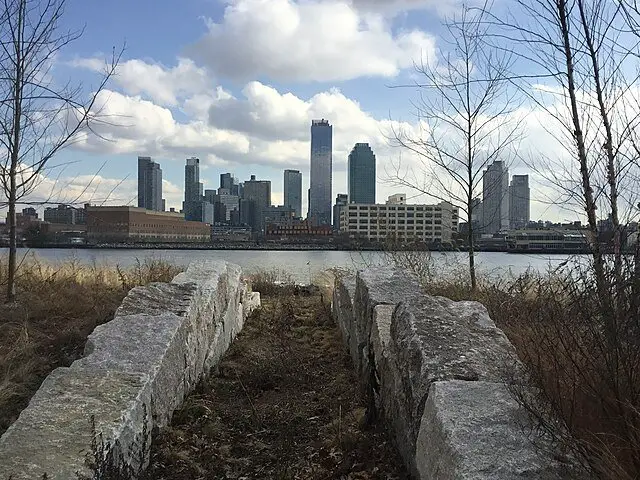
City Island, a nautical enclave nestled in the Bronx, offers a unique retreat from the frenetic pace of New York City. Often likened to a New England fishing village, this quaint community is brimming with historical charm and seaside allure. Established in the mid-17th century, City Island has preserved its maritime heritage, making it an enchanting destination for both residents and visitors alike.
Walking through the cozy, picturesque streets of City Island, one can’t help but notice the multitude of seafood restaurants that line its avenues. These establishments, many of which have been family-owned for generations, serve up some of the freshest catches in the city. Whether it’s clam chowder, oysters, or a lobster roll, the culinary offerings are a testament to the island’s deep-rooted fishing traditions.
Aside from its gastronomic delights, City Island is home to a variety of antique shops and galleries. These quaint stores offer an array of unique finds, from maritime artifacts to vintage furniture, providing plenty of opportunities for leisurely shopping. The island’s waterfront views further enhance its charm, with numerous vantage points offering stunning vistas of the Long Island Sound.
The City Island Nautical Museum stands as a beacon of the island’s storied past. Housed in an old public school building, the museum offers exhibits on the island’s rich maritime history, shipbuilding traditions, and local lore. This cultural institution is a must-visit for anyone interested in the nautical heritage that has shaped City Island’s identity.
For those seeking a peaceful escape from the bustle of the city, City Island serves as an ideal day trip. Its serene environment, historical significance, and scenic beauty make it a hidden gem in New York’s vast urban landscape. Whether you’re indulging in the local cuisine, exploring antique treasures, or simply soaking in the waterfront ambiance, City Island promises a refreshingly different New York experience.
The Cloisters
Located in Fort Tryon Park in Upper Manhattan, The Cloisters is a remarkable branch of the Metropolitan Museum of Art, devoted to the art and architecture of medieval Europe. Its exquisite setting, perched on a hilltop overlooking the Hudson River, offers visitors both a panoramic natural view and a journey back in time through its unique exhibitions and meticulously designed gardens.
The Cloisters is housed within a structure designed to evoke medieval European monasteries, incorporating elements from five French abbeys. The architecture itself is a work of art, blending seamlessly with the tranquil surroundings of Fort Tryon Park. The setting creates an aura of seclusion that contrasts sharply with the bustle of the rest of New York City, making it a peaceful retreat for those wishing to escape the urban rush.
Inside, The Cloisters showcases an impressive collection of medieval art, including illuminated manuscripts, stained glass windows, and intricate tapestries. Among its most notable treasures are the Unicorn Tapestries, a series of highly detailed and vividly colorful works that represent some of the finest artistry of the medieval period. The museum also features sculptures, paintings, and metalwork that collectively offer a comprehensive overview of European medieval art.
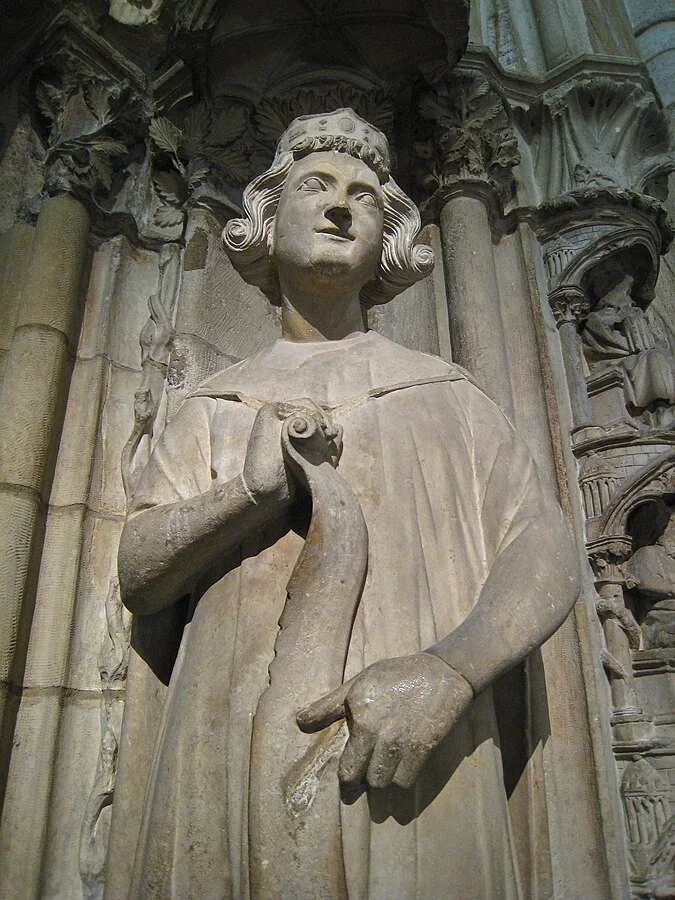
The Cloisters is not just an indoor destination; its enchanting gardens are meticulously designed to mimic the horticultural practices of the medieval era. The gardens include a variety of plants, herbs, and flowers that were commonly used in the Middle Ages for both practical and decorative purposes. Pathways wind through these lush spaces, inviting visitors to enjoy the beauty and tranquility they afford.
For art and history enthusiasts, The Cloisters is a haven of cultural enrichment and serene beauty. Its somewhat remote location further enhances its appeal, presenting an opportunity to discover art and history in a setting that feels far removed from the typical New York City experience. Whether you are drawn by the unique architecture, the exceptional art collection, or the peaceful gardens, The Cloisters offers a distinctive glimpse into a bygone era.“`html
Freeman Alley
Tucked away in the labyrinthine streets of the Lower East Side, Freeman Alley emerges as an unexpected journey into the heart of New York City’s urban art culture. As you navigate this narrow passage, your eyes are greeted by a vivid display of graffiti that transforms each step into a canvas of creativity. The eccentric and ever-changing street art tells stories of the city’s vibrant and rebellious spirit, offering a sense of adventure and discovery to those intrepid enough to wander off the beaten path.
At the end of this graffiti-clad alley lies Freemans, a true hidden gem in the expansive culinary landscape of New York City. Renowned for its rustic American cuisine, Freemans provides a dining experience that is as comforting as it is unique. The restaurant occupies a cozy, historic space, exuding an ambiance that effortlessly blends old-world charm with a touch of urban chic. Inside, the warm glow of dim lighting, antique furnishings, and taxidermy-decorated walls create an inviting atmosphere that feels both intimate and timeless.
Freemans’ menu is a tribute to hearty, home-cooked meals, featuring dishes like the signature hot artichoke dip, the savory wild rice-stuffed delicata squash, and the succulent lamb chops. Each plate is a celebration of rustic flavors, prepared with a modern twist that delights the palate. The culinary experience at Freemans is complemented by a selection of artisanal cocktails and fine wines, further enhancing the dining experience.
Discovering Freeman Alley is more than just finding a hidden restaurant; it is about immersing yourself in the rich tapestry of art, history, and culinary delight that this unique enclave represents. Whether you are an art enthusiast, a history buff, or a food lover, Freeman Alley offers a multifaceted experience that allows you to see a different, more intimate side of New York City. It is a testament to the city’s endless capacity to surprise and enchant, revealing its hidden treasures to those willing to explore beyond the surface.
Secret Speakeasies
New York City teems with concealed gems, none more captivating than its notorious secret speakeasies. These covert watering holes harken back to the Prohibition era of the 1920s and early 1930s when the production, transportation, and sale of alcoholic beverages were outlawed in the United States. The term “speakeasy” itself is derived from the need to clandestinely request a drink in hushed tones or “speak easy” so as not to arouse suspicion. Today, speakeasies capture that bygone charm, offering patrons a mix of historical escapism and modern mixology.
One of the most renowned of these hidden bars is PDT, short for “Please Don’t Tell.” Nestled behind a vintage phone booth inside a humble hot dog joint, Crif Dogs, PDT commands a unique access protocol. Patrons must pick up the receiver and press a buzzer to gain entry. The ambiance within is simultaneously cozy and exquisite, featuring taxidermy-adorned walls and intimate seating. PDT is celebrated for its meticulously crafted cocktails, where mixologists employ high-quality, often locally-sourced ingredients to elevate classic drinks to new heights.
Another prominent hidden bar is The Back Room, which offers an even more clandestine experience. Located down a dimly lit alleyway with a vintage toy shop entrance as its facade, this speakeasy provides a more authentic Prohibition vibe. The Back Room retains original 1920s décor, including an old-fashioned bar and hidden exit routes. Drinks here are served in teacups, reminiscent of the clandestine methods used to conceal alcohol during the Prohibition era. The cocktail menu features bold reinterpretations of timeless classics, promising an unparalleled experience for cocktail aficionados.
These secret speakeasies don’t just serve up nostalgic ambiance; they deliver top-tier cocktails coupled with the thrill of discovery. To the uninitiated, accessing these hidden bars might seem an adventure worth undertaking on its own. For those in the know, it’s an indulgence in New York City’s rich, secretive history, brought to life through taste and atmosphere. Through these modern speakeasies, patrons not only experience world-class mixology but also get a fleeting taste of the city’s enigmatic past.
Roosevelt Island
Nestled in the East River between Manhattan and Queens, Roosevelt Island offers a serene retreat from the bustling city while boasting a rich historical tapestry. Accessibility to Roosevelt Island is both convenient and scenic. Visitors can reach the island via the iconic Roosevelt Island Tramway, which provides breathtaking aerial views of the city skyline and river. Alternatively, the island is served by the F train with its own subway station, or you can take a ferry for a leisurely voyage across the water.
Upon arrival, visitors are greeted with an array of notable sites that showcase the unique charm of Roosevelt Island. The Franklin D. Roosevelt Four Freedoms Park, located at the island’s southern tip, stands as a tribute to the 32nd president and his profound impact on American history. The park is an architectural marvel, beautifully designed to offer open green spaces and stunning vistas of the cityscape.
The island’s historic lighthouse, positioned on the northern end, is another must-see. Built in 1872, the lighthouse is a beacon of the island’s storied past, offering a glimpse into the maritime history that once dominated this area. Equally intriguing are the haunting ruins of the old Smallpox Hospital, officially known as the Renwick Ruin. This Gothic Revival structure, shrouded in ivy, contributes an air of mystery and is a poignant reminder of the island’s medical history.
Roosevelt Island’s charm lies in its eclectic blend of historical monuments, verdant parks, and panoramic views of the New York City skyline. Whether you’re exploring its peaceful trails, reflecting on the sentiments embodied in the Four Freedoms Park, or absorbing the historical ambiance of the lighthouse and Renwick Ruin, this hidden gem offers an enriching escape from the usual tourist hotspots in New York City.
The Dream House
Located in the vibrant neighborhood of Tribeca, The Dream House stands as an exceptional hidden gem within New York City. Created by minimalist composer La Monte Young and visual artist Marian Zazeela, this immersive sound and light installation offers a unique sensory experience that is both profound and meditative. Visitors entering The Dream House are immediately enveloped in a continuous drone sound that permeates the space, emanating from strategically placed speakers. This auditory experience is masterfully designed to create a sense of tranquility and introspection.
Accompanying the drone sound are shifting light patterns that bathe the room in various colors, transforming the environment in synchrony with the auditory elements. These visual effects, created by Marian Zazeela, add a layer of depth to the installation, enhancing the meditative quality of the experience. The harmonious interplay of sound and light invokes a state of mindfulness, encouraging visitors to immerse themselves fully in the present moment.
The Dream House is more than just an artistic installation; it is a concept that embodies the principles of minimalism and the power of perception. La Monte Young and Marian Zazeela’s collaboration invites visitors to explore the boundaries of sensory experience, urging them to engage with the nuances of sound and light in a deliberate manner. This installation functions as a refuge from the hectic pace of city life, offering a space for quiet reflection and rejuvenation.
Open to visitors every week from Wednesday to Saturday, The Dream House operates from 2 PM to midnight, allowing ample opportunity to experience this extraordinary venture. Whether you’re a resident or a tourist in New York City, a visit to The Dream House promises to be a transformative artistic encounter, revealing yet another layer of the city’s rich cultural tapestry.
The Little Red Lighthouse
The Little Red Lighthouse, officially known as Jeffrey’s Hook Lighthouse, stands as a charming testament to history and literature along the Hudson River. Located under the grand expanse of the George Washington Bridge, this iconic lighthouse has served as both a navigational aid and a cultural landmark. Built in 1921, its acquisition by the city of New York in 1947 preserved its legacy, making it a beacon of the past and present.
Historically, the Little Red Lighthouse played a vital role in ensuring the safe passage of vessels navigating the often treacherous waters of the Hudson River. Its powerful beacon guided numerous boats, preventing accidents and facilitating commerce during its operational years. Though decommissioned in 1948, it continues to capture the imagination and hearts of visitors as a symbol of perseverance and charm.
The lighthouse’s cultural significance was cemented by Hildegarde H. Swift’s children’s book, ‘The Little Red Lighthouse and the Great Gray Bridge,’ published in 1942. This beloved story brought the lighthouse to literary fame, enchanting generations with its narrative of the small but proud lighthouse overshadowed by the grand George Washington Bridge. Swift’s tale of courage and importance has made the lighthouse a cherished storybook character, further embedding it in the fabric of New York City’s history.
Today, the picturesque setting of the Little Red Lighthouse offers a unique blend of scenic beauty and historical intrigue. Tucked under the soaring architecture of the George Washington Bridge, it provides a tranquil riverside escape from the hustle and bustle of city life. Visitors can enjoy peaceful walks along the Hudson River, basking in the serenity of the surrounding landscapes. The lighthouse is accessible via a short hike along the Hudson River Greenway, making it an inviting destination for both locals and tourists seeking a quieter view of the city.
Whether you are a history enthusiast, a literature lover, or simply in search of a serene spot by the river, the Little Red Lighthouse stands as a hidden gem in New York City, offering a slice of tranquil charm amid the urban sprawl.
Bushwick Street Art
Bushwick, Brooklyn, has emerged as a formidable cultural hub, renowned for its vibrant street art scene that attracts artists from around the globe. The origins of this artistic revolution can be traced back to the early 2000s when local visionaries began converting the industrial area’s abandoned spaces into vivid canvases. This grassroots movement gained momentum and support, evolving over the years into a celebrated outdoor gallery, with the Bushwick Collective playing a pivotal role.
The Bushwick Collective is a curated street art gallery that transforms neighborhood walls into breathtaking murals. Founded by native Joe Ficalora in 2012, the collective collaborates with both local and international artists to create public art installations that captivate and inspire. The art found here is incredibly diverse, encompassing a multitude of styles and themes. From the playful and whimsical to the stark and thought-provoking, each piece offers a unique narrative, adding layers of complexity and beauty to the urban landscape.
Key mural locations include Troutman Street and St. Nicholas Avenue, where striking examples of street art can be found. Artists such as Case Maclaim, Tatyana Fazlalizadeh, and Dan Witz have contributed to the area’s allure, continuously evolving the scenes with new works. The murals range in artistic style, from hyper-realistic portraits to abstract compositions, and often address themes like social justice, community, and cultural identity. These artworks not only beautify the area but also foster a sense of community among residents and visitors alike.
To fully appreciate the diversity and creativity of Bushwick’s street art, a walking tour comes highly recommended. Guided tours provide insightful commentary and context, allowing participants to experience the narratives behind the art and the artists’ intentions. Additionally, they offer a higher degree of engagement with the local culture and neighborhood dynamics, reinforcing the transformative power of street art in urban settings.
Bushwick’s street art is a dynamic and ever-changing exhibition, reflecting the neighborhood’s spirit and diversity. It transforms the urban environment into a living gallery, inviting all who wander its streets to engage with the transformative power of art in public spaces.
Green-Wood Cemetery
Founded in 1838, Green-Wood Cemetery in Brooklyn stands as a National Historic Landmark, offering an oasis of tranquility and historical significance amidst the hustle of New York City. Designed initially as a rural cemetery, it spans over 478 acres of gently rolling hills, serene ponds, and grand mausoleums, making it not only a burial ground but also a place of scenic beauty.
The cemetery’s picturesque landscape is intricately planned, featuring winding paths that meander through well-maintained gardens, offering visitors a sense of peace and solitude. The design of Green-Wood Cemetery is a testament to the 19th-century vision of creating a resting place that also serves as a public park, encouraging people to engage with nature and reflect on life’s perpetual cycle amidst verdant surroundings.
Green-Wood Cemetery is the final resting place of numerous notable individuals, adding to its allure as a historical site. Prominent artists, such as Jean-Michel Basquiat, and influential politicians, like Boss Tweed, are buried here. Moreover, the cemetery serves as an enduring monument to Civil War veterans, whose contributions to American history are commemorated through various memorials scattered across the grounds.
Green-Wood further enhances its historical and educational value by offering guided tours and events. These tours delve into the rich tapestry of stories woven throughout the cemetery, detailing the lives of the notable figures interred within its bounds. Events often explore themes such as art history, architecture, and the Civil War, providing attendees with a deeper understanding of the cemetery’s significance.
The serene atmosphere of Green-Wood Cemetery invites visitors to spend time in reflection, away from the city’s noise. It is a place where one can not only pay respects to the past but also appreciate the artistic and natural beauty that makes it a hidden gem in New York City, offering a unique opportunity for both quiet contemplation and historical exploration.

